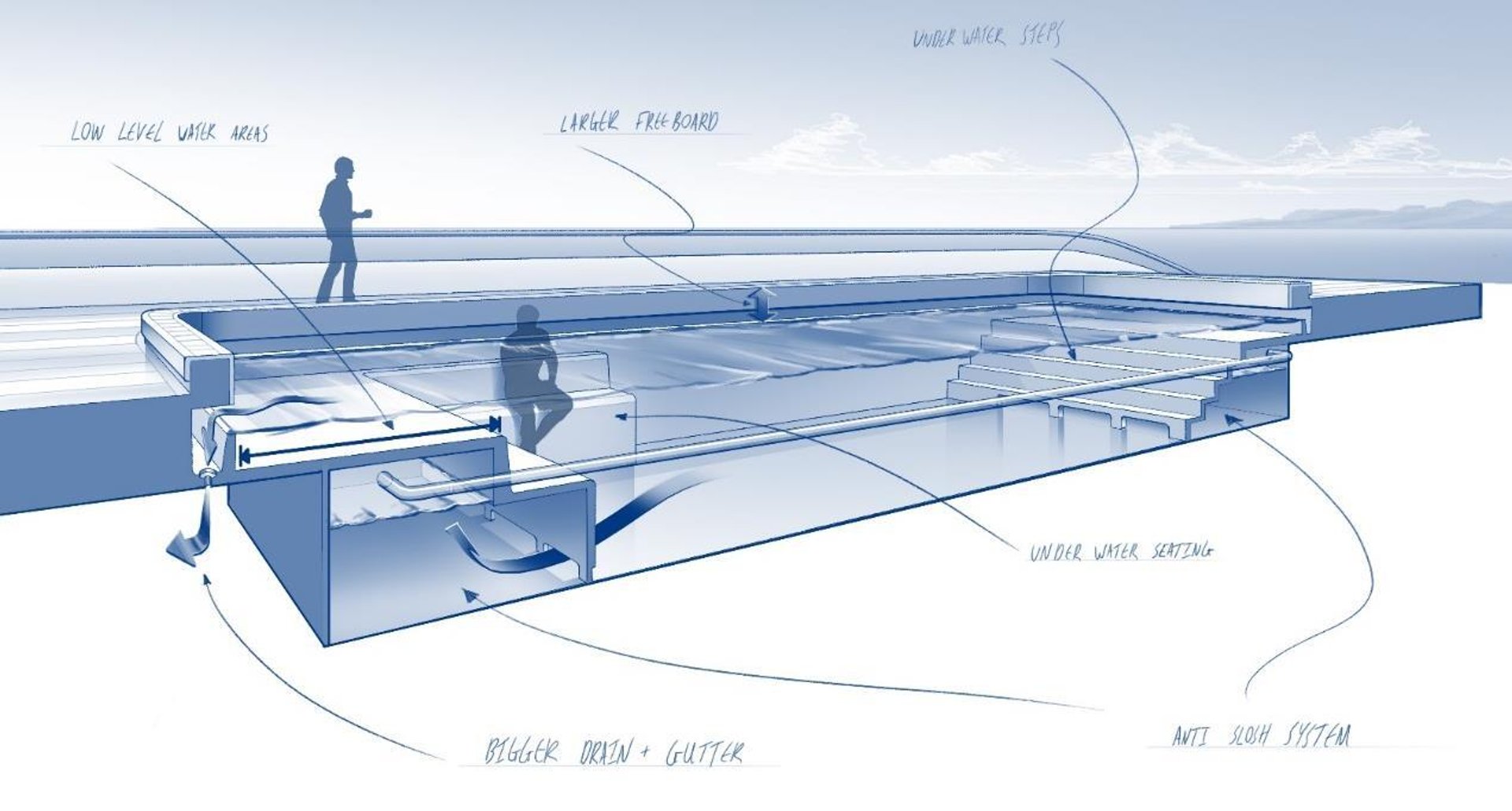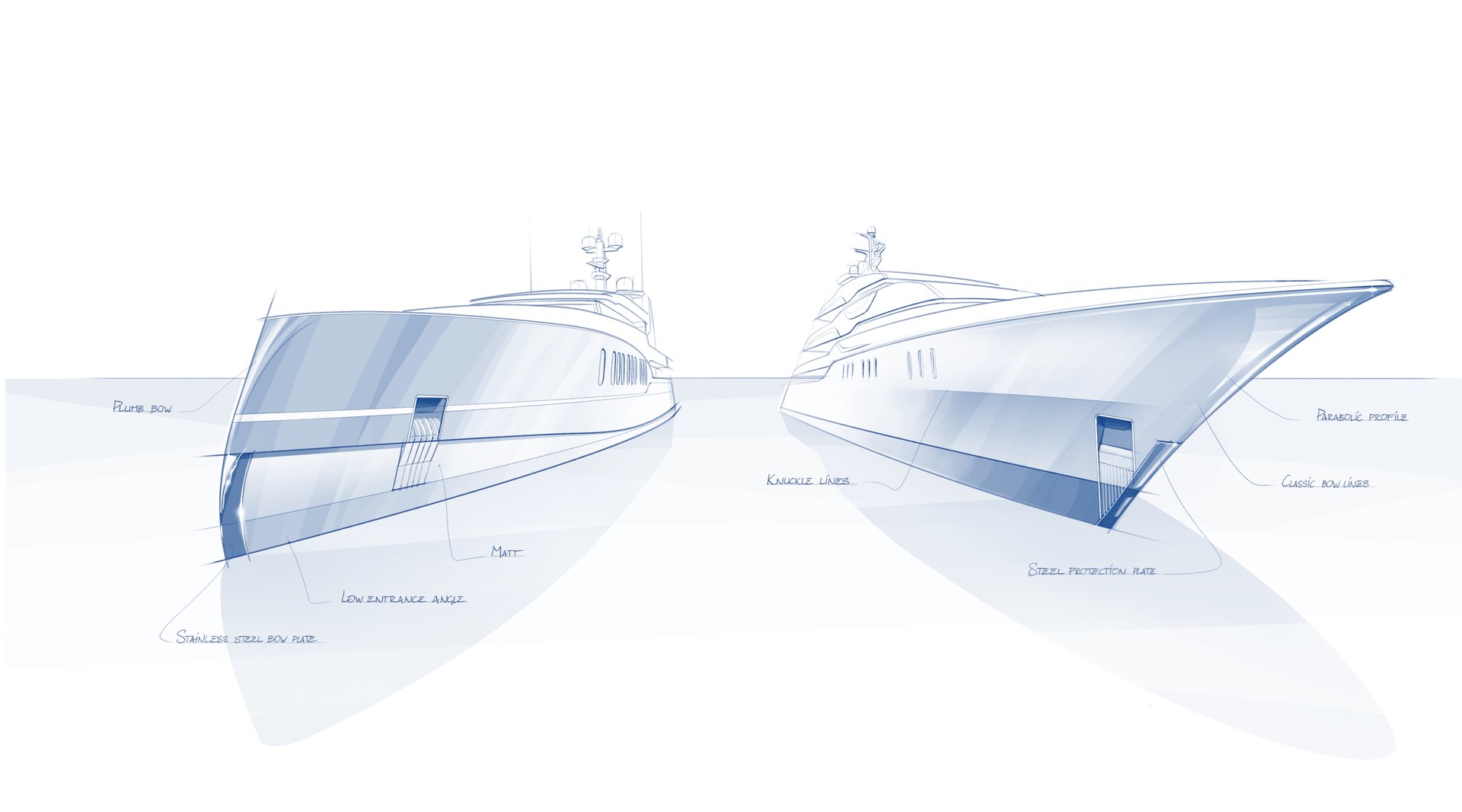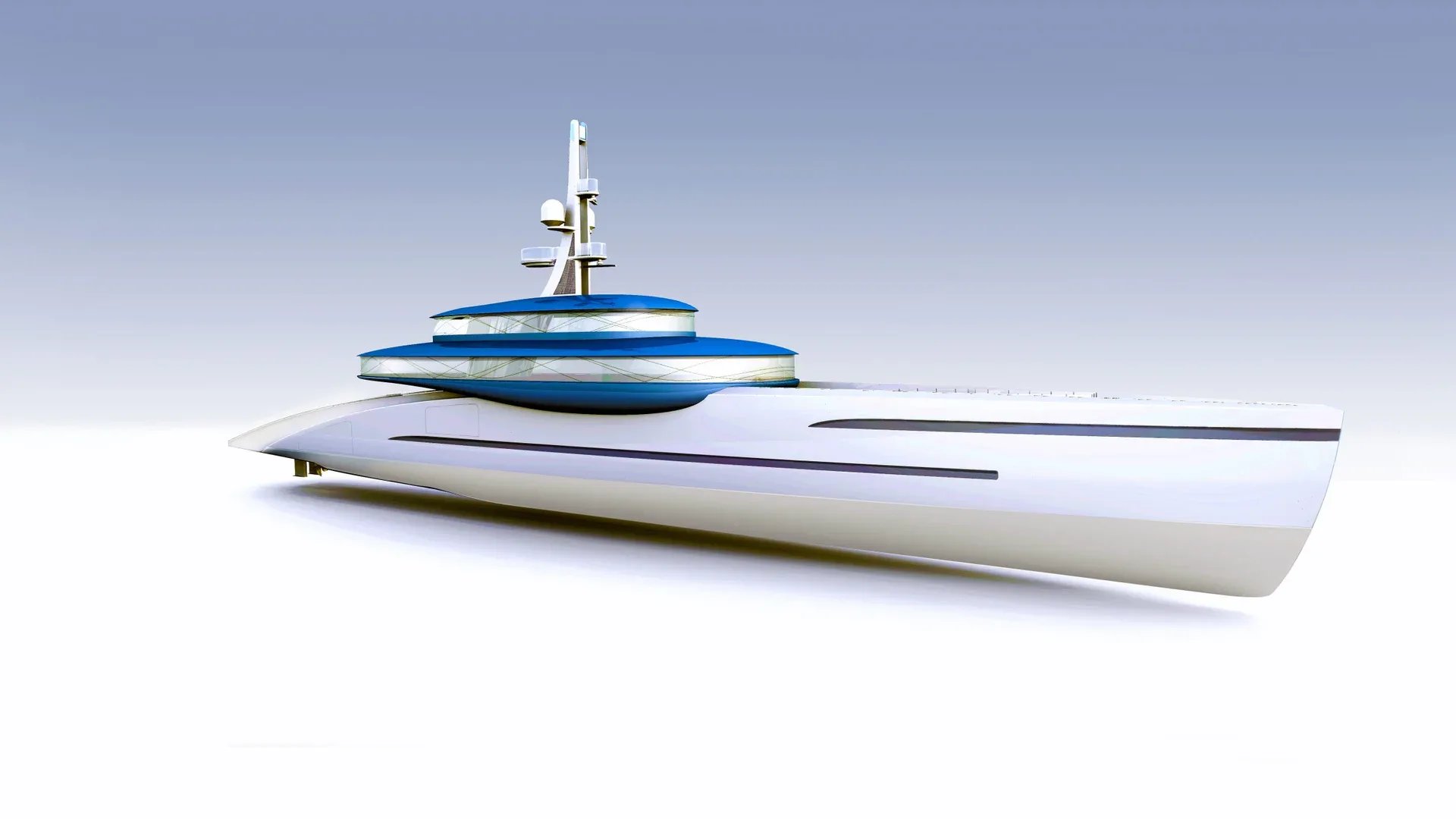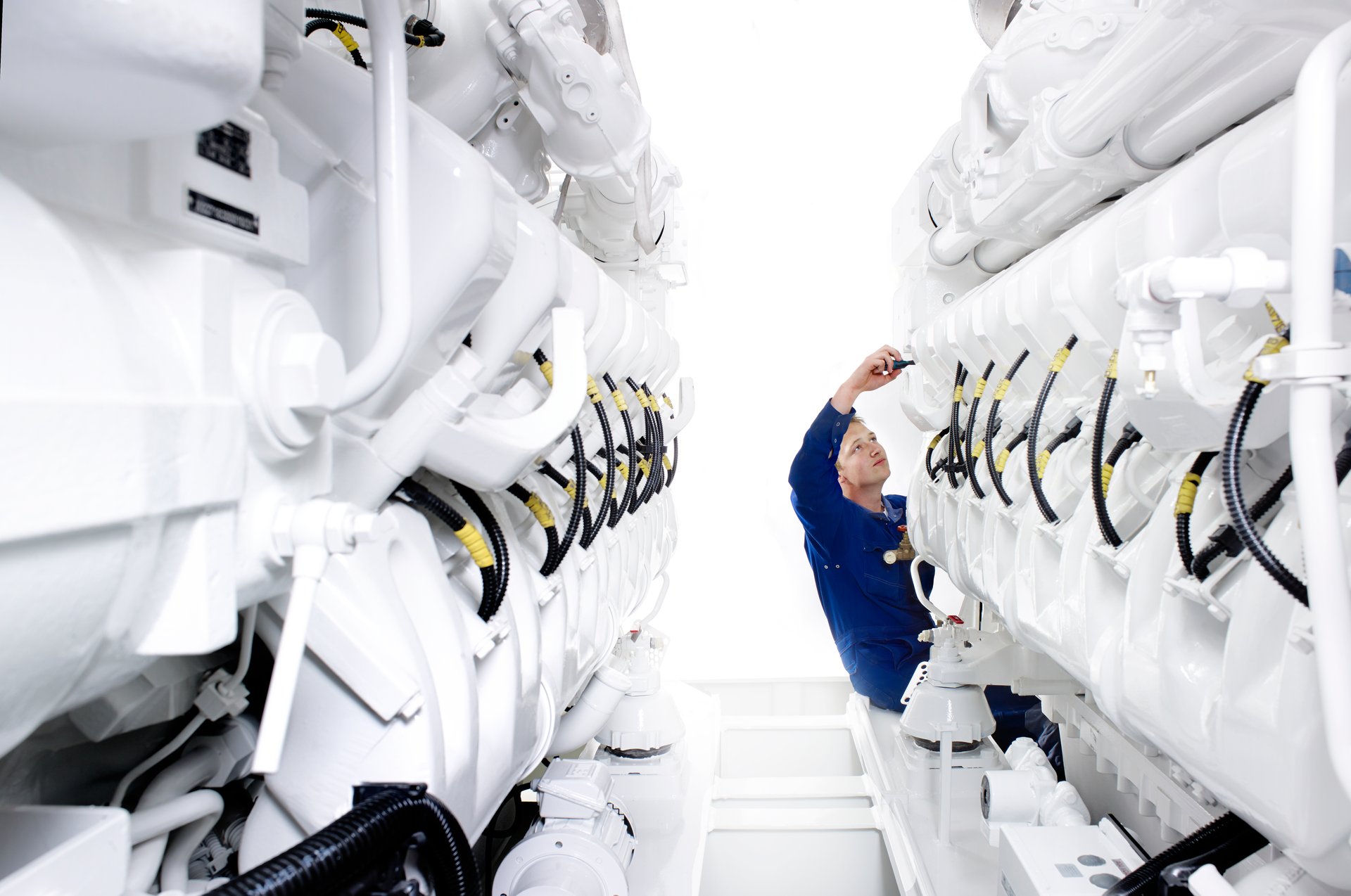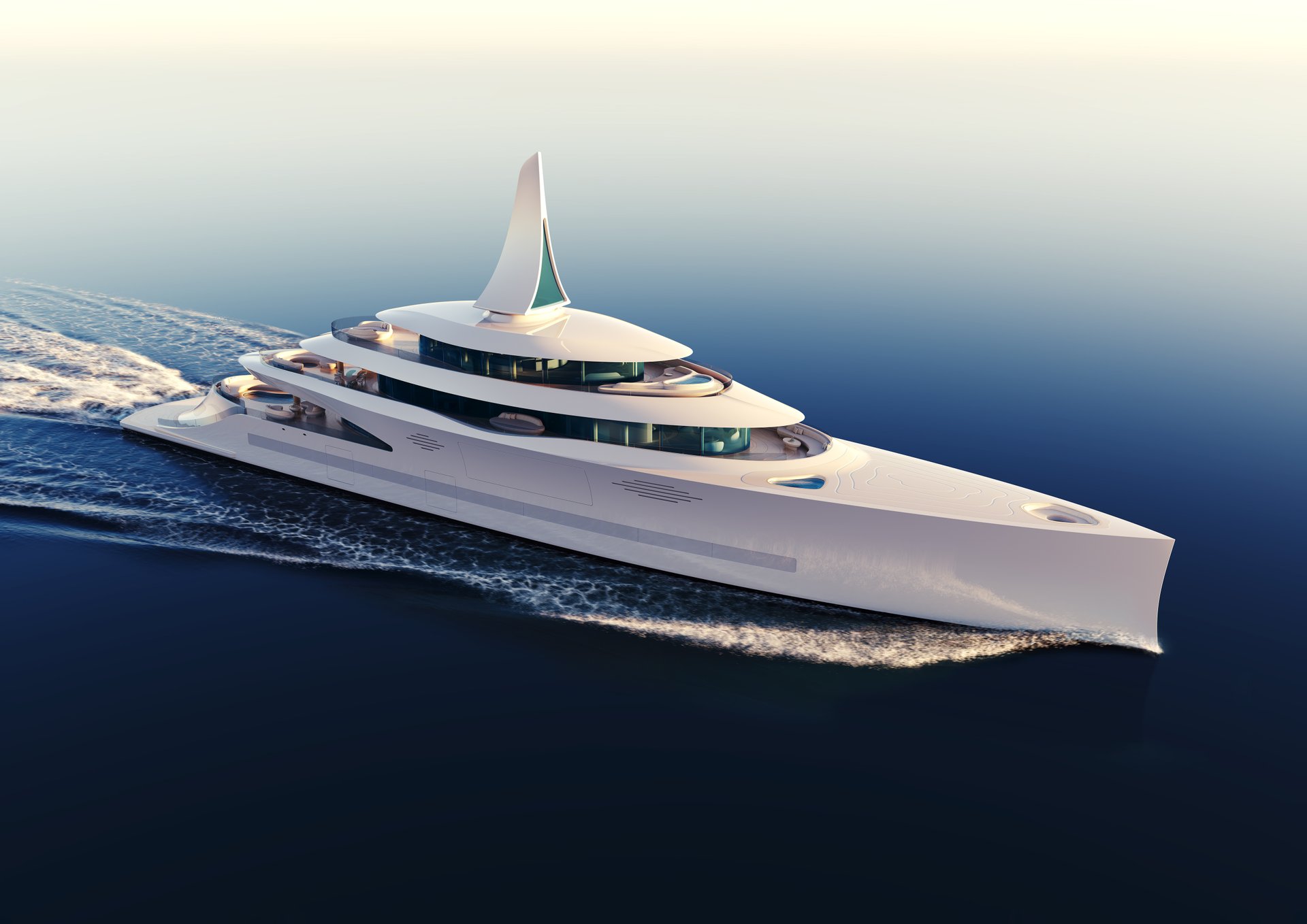The name and patent are currently pending, but the technology and workflows around it are already standard procedure at Feadship’s yards. While it might not revolutionize the yachting industry, it is certainly improving the happiness of the onboard experience – for owners and guests, but also captains and crew. The technology – currently operating under the name ContraWaveTM – eliminates one of the most unwelcomed guests onboard any yacht: pool slosh.
A few years ago, Feadship began assembling a team of scientists, engineers and technical students to crunch the numbers to better understand the complex combination of factors that lead to pool sloshing. ContraWaveTM is the result of this five-year project. “What our research makes clear is that good pool design involves more than welding steel,” says Marc Levadou, Manager Knowledge & Innovation at Feadship. “Good pool design is also about implementing the right technology.”
It began as a student project in 2019, followed by a few brainstorms, leading to a student building a test setup consisting of a large rectangular tank capable of examining the effect of the yacht excitation on the behaviour of the water in the pool. An angled floor at the bottom of the tank teeter-totters with the currents.
“It was an ad-hoc system at first, and certainly not feasible over the long term, but it did set the stage for more sophisticated solutions using rubber walls, air cushions and eventually the system we now have in place,” says Levadou, who is the project’s lead. Because sloshing involves a combination of factors, Levadou eventually expanded his anti-pool slosh team to include several De Voogt engineers and technical students, all of whom spent a year calculating, tinkering and testing the countless variations.
In 2020, confident of their results, they took the first iteration of their system to the Dutch Marine Research Institute Netherlands (MARIN) to assess its efficiency on the institute’s powerful hexapod, a machine capable of mimicking a ship’s every known movement (the hexapod is also used to test sloshing for LNG tanks and cruise ship swimming pools). They walked away with ideas for improvements, tweaked their system again and then returned to a MARIN for a new round of testing. By 2023 the standards and workflows that emerged from their research were introduced to all new build conversations.
Design is technology
Type in ‘sloshing pools’ on YouTube and you’ll instantly be greeted by epic scenes of cruise ship swimming pools at rough seas. For the record, no technology can avoid slosh in hurricane conditions. The type of slosh Levadou and his team stepped up to conquer was that of a more roguish variety – the sneaky kind. The odd phenomenon of pool slosh that takes place in what appears to be perfectly calm waters.
“People understand pool sloshing within the context of bad weather because it speaks to the imagination. Less understandable – especially to the owners of superyachts – is the pool sloshing that takes place while anchored in a beautiful bay,” Levadou says. “I’m not talking about wake created by a passing boat or even swells resulting from a breeze, but the almost imperceptible resonance that arises from the ocean’s typical harmonic motions. If the conditions are right – or in this case wrong – sloshing can seem to appear out of nowhere. Under such circumstances, a pool without any sort of damping can quickly become a nuisance for all those sitting in or around it.”
To better understand these harmonic motions and how pools react to them, Levadou and his team built a computational tool to assess the design parameters that both contribute to and reduce sloshing. Using this tool, they were able to create a handbook of design standards that can and should be considered by architects and designers in the early stages of their pool designs.
“Feadship’s sales teams present our design standards at the beginning of the process,” Levadou says. “Even if the yacht decides not to invest in our anti-slosh technology – and not all should – we always share these design standards with them.”
The design standards include both common-sense ideas, like integrating benches and stairs into a bare square pool, to smart solutions backed by computational data. For example, introducing curved sides to a pool does little to reduce sloshing, while varying water levels and depth quite a lot. They also suggest designing horizontal drain gutter openings; data shows that they have twice the damping effect as vertical ones. And it turns out that pool steps designed at a 1.5x vertical ratio are dramatically more effective at damping slosh than other types of stairs. Overall, Levadou and his team discovered that the most effective way to avoid sloshing is to mimic the natural inclination of a beach.
“We already use low-fidelity programs for basic calculations, and we use high-fidelity programs for dynamic modelling,” he says. “What was missing from the equation was a mid-fidelity program low enough in cost to make it feasible to be used early in the design process. That’s precisely what this is.”
ContraWaveTMTech
At the core of Feadship’s ContraWaveTM technology is an air chamber capable of regulating pool motions automatically. The closed system anticipates and absorbs the waves before they can build up enough energy to slosh. Connected by a series of pipes integrated underneath and into the sides of the pool, the entire setup is invisible to owners and guests.
“The system doesn’t react to waves but acts on its own, automatically. It has to,” Levadou says. “Wave frequencies differ around the world. The frequency in the Med is different to those in the Caribbean where the waves are longer.”
Their models factor in all these oceanic variables using the mid-fidelity tool Boundary Element Method (BEM) tool. Based on these calculations, they can engineer and design an anti-slosh system for each specific yacht, adapting to pressure and the size of the piping to the shape and dimensions of any pool. The system works like a commercial wave pool in that it relies on air chambers and pumps, but instead of creating waves Feadship’s system reduces them. ContraWaveTM is a wave pool in reverse.
“We can confidently say pools lacking one or many of our design standards will experience some sloshing. What has changed is we can now analyse the risk and make the calculations early in the process and help owners decide whether the investment in our system is worth the investment.”
As the size of yachts and their pools increase exponentially, the investment in ContraWaveTMmay be warranted.
“We’ve done all the research and modelling. We know the system dramatically reduces sloshing. We know how to design and engineer it specific dimensions. We also know that owners want it,” Levadou says. “Will it make the world better? No, it won’t. Will it improve the swimming pool and bring more happiness to the yachting experience? Most definitely.”


